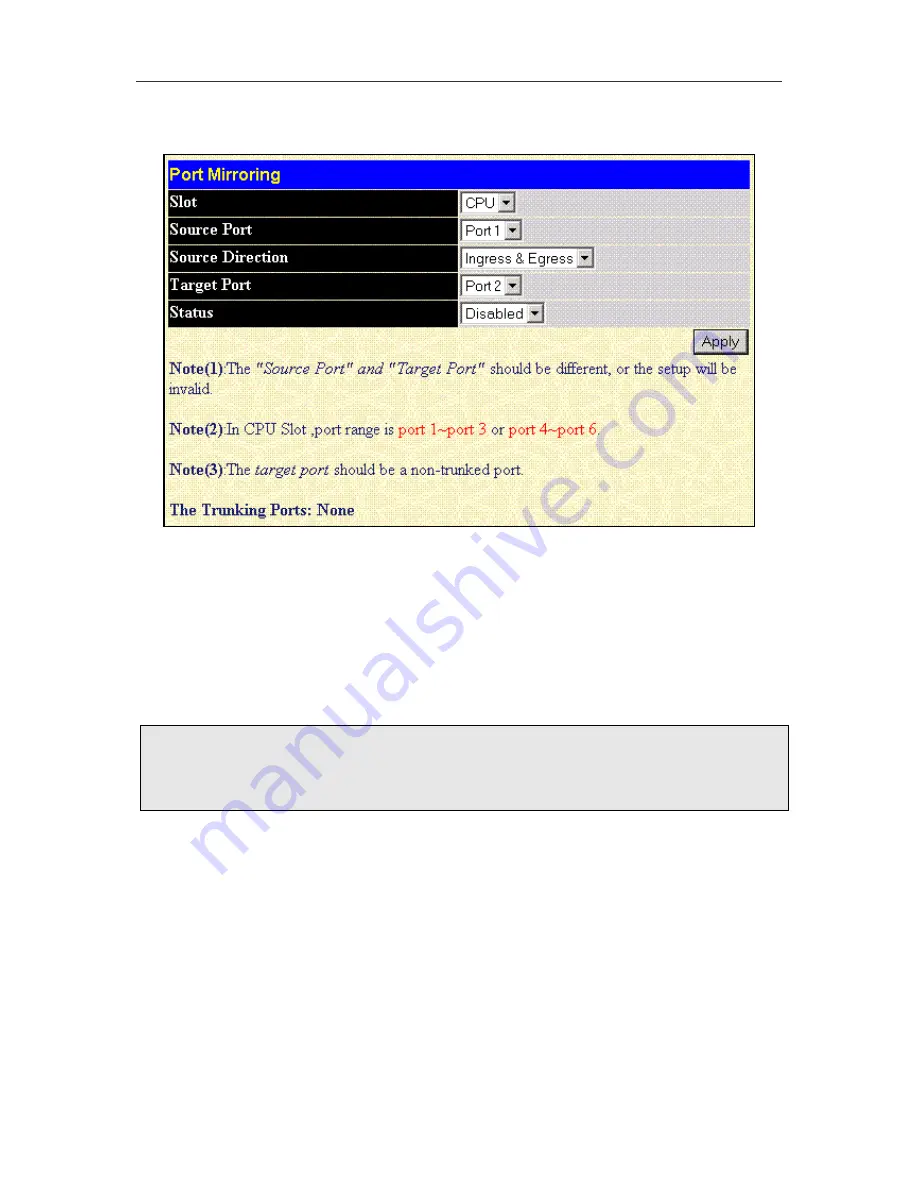
DES-7000/DES-7100 Layer 2 Switch User
’
s Guide
Using the Web-based Management Software
58
Port Mirroring
Figure 6- 9. Port Mirroring window
The Switch allows you to copy frames transmitted and received on a port and redirect the copies to
another port. You can attach a monitoring device to the mirrored port, such as a sniffer or an RMON
probe, to view details about the packets passing through the first port.
To configure a mirror port, first select the
Source Port
from where you want to copy frames and the
Target Port
, which receives the copies from the source port. This is the port where you will connect a
monitoring/troubleshooting device such as a sniffer or an RMON probe. Next, select the
Source
Direction
,
Ingress
,
Egress
, or
Ingress & Egress
and
change the
Status
drop-down
menu to
Enabled
.
Finally, click
Apply
to let the changes take effect.
Relevant CLI command sets for port mirroring are
config mirror
and
enable
/
disable mirror
.
Note:
You cannot mirror a fast port onto a slower port. For example, if you try to mirror the traffic from a 100
Mbps port onto a 10 Mbps port, this can cause throughput problems. The port you are copying frames from
should always support an equal or lower speed than the port to which you are sending the copies. Also, the
target port for the mirroring cannot be a member of a trunk group. Please note a target port and a source port
cannot be the same port.
Link Aggregation
Link Aggregation allows multiple ports to be grouped together and to act as a single link. This gives a
bandwidth that is a multiple of a single link
’
s bandwidth.
Link aggregation or port trunking is most commonly used to link a bandwidth intensive network device
or devices
–
such as a server
–
to the backbone of a network.
Up to 8 links (ports) may form a single trunk group on a switch module and no more than two trunk
groups are allowed per module. Each trunk group must reside entirely on a single module. The CPU
module allows creation of one or two port trunk groups of up to 3 GBIC uplink ports. Port trunk groups
are numbered consecutively. Any member port can be designated as the master of the group. All
configuration options
–
including the VLAN configuration
–
that can be applied to the master port are
applied to the entire trunk group.
Load balancing is automatically applied to the ports in the trunked group and a link failure within the
group causes the network traffic to be directed to the remaining links in the group.
Summary of Contents for DES-7000 Series
Page 111: ......






























